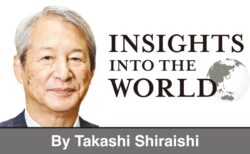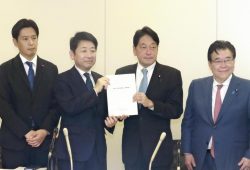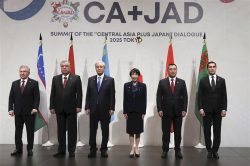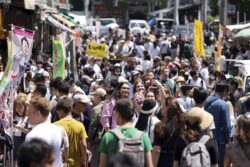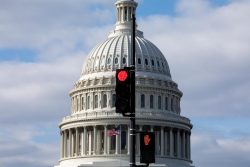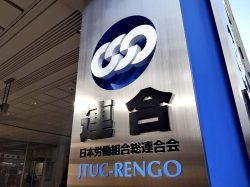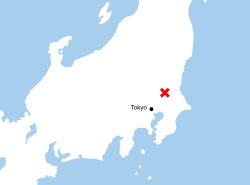11:00 JST, March 7, 2025
Three years will soon have passed since Japan’s consumer price inflation topped 2%. Has the Japanese economy escaped deflation? Is inflation here to stay, and will it gain momentum?
The Bank of Japan’s current “price stability target” is set at 2% year-on-year in the core consumer price index (CPI). The bank apparently wants to keep the inflation rate between 1% and 3%. If the rate falls below 1%, there will be a greater risk of a return to a deflationary economy. If it rises above 3%, the negative impacts of inflation will become more acute. There is also a risk that inflation will further increase, so it is not advisable to leave the situation unaddressed.
Currently, I don’t see any problem as the core CPI has remained more or less within the target range. Still, in 2024 inflation stopped falling and then in December grew to 3% for the first time in a year and four months. In January, inflation further rose to 3.2% on a year-on-year basis.
The core CPI does not include fresh food prices, which have stayed high. When you look at the prices of cabbage and other fresh goods, it is clear that the rise in prices is affecting consumers more severely than the core CPI would suggest. The shape of the Japanese economy going forward will depend largely on whether inflation subsides or remains high.
Japan had for many years been stuck with a deflationary economy. As a result, many people thought that even if prices rose temporarily in the wake of overseas inflation, such an increase would then abate.
This view derives from the fact that Japan’s population continues to shrink due to the low birth rate and an aging population. In this sort of situation, demand for goods and services should continue to drop — and so should prices.
The expectation that even if prices rise they will eventually come back down is also reflected in the Bank of Japan’s monetary policy. Although inflation has exceeded 2% for nearly three years, the central bank has kept the target for its short-term policy interest rate at the low level of 0.5%.
Since the real interest rate is the nominal interest rate minus the inflation rate, that means Japan’s real interest rate is deep in the negatives. In other words, the BOJ’s monetary policy is stimulating the economy.
The bank’s reasoning here may be that even if it does not raise interest rates, the risk of acute inflation is low. It seems to be strongly concerned that raising rates too early could put a significant drag on the economy.
That is why the bank has remained very cautious about raising its policy interest rate even in the face of inflation that has stayed above 2%. Because the Japanese economy was deflationary for so long, it seems the BOJ cannot shake the fear that deflation will return.
Deflation focused
Many participants in the financial market also expected the rise in prices to slow down after a while even if the inflation rate remained elevated for longer.
The long-term interest rate, as measured by yields on benchmark 10-year government bonds, remained around 1% in the second half of 2024.
Long-term interest rates are said to be determined by long-term inflation expectation, the potential growth rate and fiscal risks, among other factors. The higher the inflation expectation, potential growth rate and fiscal risk, the higher the long-term interest rates will be.
When the potential growth rate is 0.5% and there is no fiscal risk, inflation will be expected to stand at only 0.5%, or the difference between the 1% long-term interest rate and the 0.5% growth rate.
Even though Japan’s statistics show that inflation has hovered above 2% for nearly three years, the market has continued to expect it to fall to 0.5% in the long term. Forecasts made using the long-term interest rate suggest inflation should be very low.
However, this trend began to change after Donald Trump was elected U.S. president for the second time in November.
As we ushered in the New Year, the long-term interest rate started to rise rapidly, surpassing 1%. In January, the Bank of Japan raised its short-term policy interest rate from 0.25% to 0.5%, while Japan’s CPI rose to 3.2%. In response to these developments, the long-term interest rate is now rising, too.
We have to ask whether the rise in prices will soon subside, or whether we should be cautious.
So, let us think again about the relationship between the low birth rate and aging population on the one hand, and prices on the other.
There is no doubt that Japan’s population will shrink due to the aging of society and the low birthrate, and that consequently demand will contract. That said, it is not correct to assume that a deflationary environment will emerge in the medium to long term. That is because economic analysis requires that you look not only at demand but also at supply.
Two sides of demographics
A dip in the overall population due to the low birth rate and aging population will also reduce the size of Japan’s labor force, or the labor supply. A drop in the labor supply will end up causing wages and prices to rise. The question in this situation is: Will the decline be larger for supply or demand?
As Japan’s demographic challenges will lead to the working age population accounting for a smaller share of the overall population, the decline in supply will tend to be larger than the decline in demand. It is true that demand will shrink because of a decline in the overall population, but the supply side will shrink faster.
It used to be thought that demographic issues would lead to deflation as they reduce demand. However, the view that these same issues will exacerbate the labor shortage, thereby driving up wages, has become more prominent in recent years. The rise in wages is not in itself bad, but this will undoubtedly lead to inflation.
If there is both “good” and “bad” inflation, how should the present situation be described? Moderate increases in prices and wages following a long period of deflation should be deemed “good inflation.” When wages and prices rise in tandem, this can be called a virtuous cycle.
Nevertheless, if we see wages and prices rise higher and higher, at a rate above 3%, the situation will be closer to “bad inflation,” which could set off a vicious cycle of wage and price increases.
At present, there is perhaps no need to be overly concerned about a further rise in inflation. Nonetheless, the market appears too inclined to believe that “prices will subside sooner or later.”
The Trump administration is producing one policy after another that could reignite inflation in the United States. Given the situation, long-term U.S. interest rates have remained elevated, helping the U.S. dollar to strengthen against the Japanese yen on foreign exchange markets.
If the yen weakens further, the prices of raw materials and products Japan imports will rise. In other words, Japan is under pressure from U.S. inflation.
Domestically, we are already seeing a steep rise in the price of foods such as rice and cabbage. This may be a temporary phenomenon, but it is true that the sharp price increases are having a direct effect on ordinary people’s kitchens. Isn’t it time to be more vigilant concerning the negative aspects of inflation?
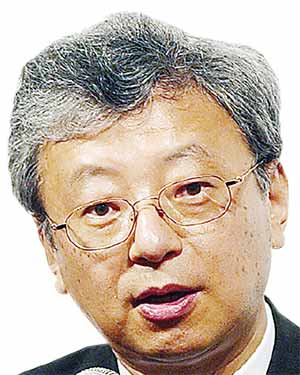
Motoshige Itoh
Itoh is a professor emeritus at the University of Tokyo. He also served as a professor with the Faculty of International Social Sciences at Gakushuin University until March 2022.
The original article in Japanese appeared in the March 3 issue of The Yomiuri Shimbun.
"Editorial & Columns" POPULAR ARTICLE
-

Violations of Subcontract Law: Major Automakers Must Eliminate Old Practices
-

Local Governments’ Tax Revenues: Devise Ways to Correct Imbalances in Tax Sources
-

5 Japanese Business Dinner Mistakes to Avoid — and What They Taught Me About Business in Japan
-

Heavy Rains in Asia: Support for Victims, Flood-Control Measures Urgently Needed
-

New Nuclear Threat: China Seeking to Follow U.S., Russia in Military Expansion
JN ACCESS RANKING
-

Keidanren Chairman Yoshinobu Tsutsui Visits Kashiwazaki-Kariwa Nuclear Power Plant; Inspects New Emergency Safety System
-
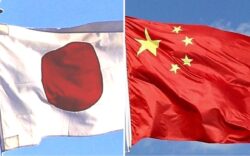
Imports of Rare Earths from China Facing Delays, May Be Caused by Deterioration of Japan-China Relations
-
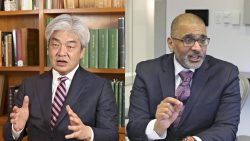
University of Tokyo Professor Discusses Japanese Economic Security in Interview Ahead of Forum
-
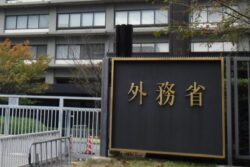
Japan Pulls out of Vietnam Nuclear Project, Complicating Hanoi’s Power Plans
-
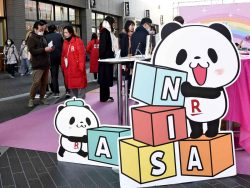
Govt Aims to Expand NISA Program Lineup, Abolish Age Restriction



